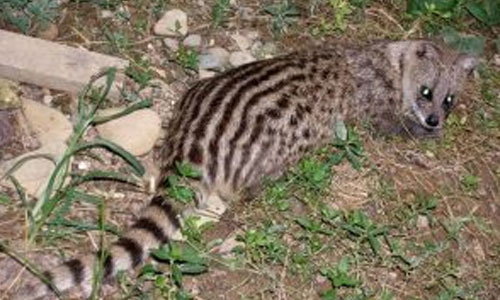
Gujarat is a land of contrasts as you will experience when you travel from its north-west arid zones to the eastern sides and from the North to the South. While there is the desert of Kutch on one side, the southern side is lush green and richly forested. It is home to wildlife sanctuaries and resorts like Saputara. You can enjoy a stay here and then go on to visit Shoolpaneshwar Wildlife Sanctuary a little bit up north, visiting the Purna Wildlife Sanctuary on the way, preferably in a hired car.
History
Shoolpaneshwar is mainly in Gujarat with some parts in Maharashtra. Shoolpaneshwar derives its name from Lord Shiva who is depicted in his form carrying a Trishul which is also known as shool. Unfortunately the ancient temple is now submerged in the Sardar Sarovar Dam. This sanctuary is in the Dangs Forest region and the Vindhya and Saputara hill ranges. The sanctuary covers an area of about 607 sq. km. comprised of lush green forests, hills and water bodies of which the Zarwani Waterfall is a must visit idyllic place. The sanctuary came into being in 1982 with an area of just 150 sq. km but it was later expanded in 1987 and 1989 to its current status.
Flora
The sanctuary is thickly forested and houses tribes known as Vasavas who depend on the forest and land for subsistence. The sanctuary is thickly forested with deciduous trees like karanj, mahuda, amaltas and teaks. Bamboo abounds and is the main timber for housing. Besides, there are 575 types of flowering plants.
Fauna
The thick forest is home to a huge variety of wildlife with flying squirrels in abundance. Besides, the area is known for its sloth bears, leopards, pangolins, civet cats, wild dogs, porcupine and a variety of deer. Then there are reptiles like pythons, lizards and tortoises. Birds too abound, making it a bird watcher’s paradise with the forests being home to parakeets, fowls, eagles, hawks, owls and hornbills. The best place where you can watch birds is the water bodies in the sanctuary.
Things to do
A trek inside the Shoolpaneshwar Wildlife Sanctuary can be enlightening and educational. One can see at close quarters how flora and fauna are interdependent on each other and understand the importance of ecosystems as well as maintaining green cover. It is best to drive in one’s own vehicle or a hired one and enter the forest from Gorai village reached from Dabhoi highway from Vadodara. The drive itself can be engrossing as one comes across hillocks, trees, and streams of water. You can camp at the Zarwani Falls campsite after wading through the river. However, this is not the only place to stay. You are at one with Nature here. A day trip is all right but it is a good idea to spend a night at a campsite to get a real feel of the forest.
Accommodation
You can approach the Zarwani Eco Campsite from Dabhoi highway. From the south you can drive up north to the Sagai Eco campsite in Dediapada sanctuary and explore Shoolpaneshwar as well as the Malsamot hills and Ninai waterfalls. if you plan a one day trip you can opt to stay in royal style at the Wadia Palace at Rajpipla or the rest house at Dediapada, Sagai or Kevadia and also take a trip alongside the Narmada to the Sardar Sarovar Dam.
Getting There
Shoolpaneshwar is close to Rajpipla that can be reached from Bharuch, about 80 km away. One can arrive in Bharuch by train or fly in to Vadodara and drive the rest of the way. If you plan to take a state road transport bus or private buses, Bharuch and Ankleshwar are the places from where you get public and private transportation. Ahmedabad is 202 km away and Vadodara about 90 km. If you arrive in either of these cities you can enjoy a delightful ride to the Shoolpaneshwar Sanctuary.
Good Time to Go
October and November are the good months to plan your visit because the entire forest is lush green after the rains and there are birds and animals to be seen at water holes. Of course, you can plan a visit in December, January, February, and March too for a nice winter holiday. Summer can be quite hot but once you are in the forest it is bearable. Monsoon is best avoided.
Keep in mind that you need permission from the Forest Office to visit the Zarwani falls and trek inside. Wear tough boots and carry some food and water with you when you go on a trek. Smoking is not allowed and littering should be avoided.
Shoolpaneshwar is the closest you can get to the rainforests experience for which you may have to travel to Kerala or Assam or outside the country. It is an undiscovered gem. Find it and enjoy it.
Shoolpaneshwar Wildlife Sanctuary Map
List of wildlife sanctuaries of Gujarat
- Gaga Wildlife Sanctuary
- Jambughoda Wildlife Sanctuary
- Thol Wildlife Sanctuary
- Rampara Wildlife Sanctuary
- Pania Wildlife Sanctuary
- Hingolgadh Wildlife Sanctuary
- Khijadiya Wildlife Sanctuary
- Kutch Wildlife Sanctuary
- Nal Sarovar Bird Sanctuary
- Ratanmahal Sloth Bear Sanctuary
- Jessore Sloth Bear Sanctuary
- Purna Wildlife Sanctuary
- Barda Hills Wildlife Sanctuary
- Narayan Wildlife Sanctuary
- Balaram Ambaji Wildlife Sanctuary
- Shoolpaneshwar Wildlife Sanctuary
- Gir Wildlife Sanctuary
- Wild Ass Sanctuary
- Marina National Park
- Vansda National Park
- Blackbuck National Park
- Gir Forest National Park
- Flora Fauna Gir National Park
- Devaliya National Park


Leave a Reply